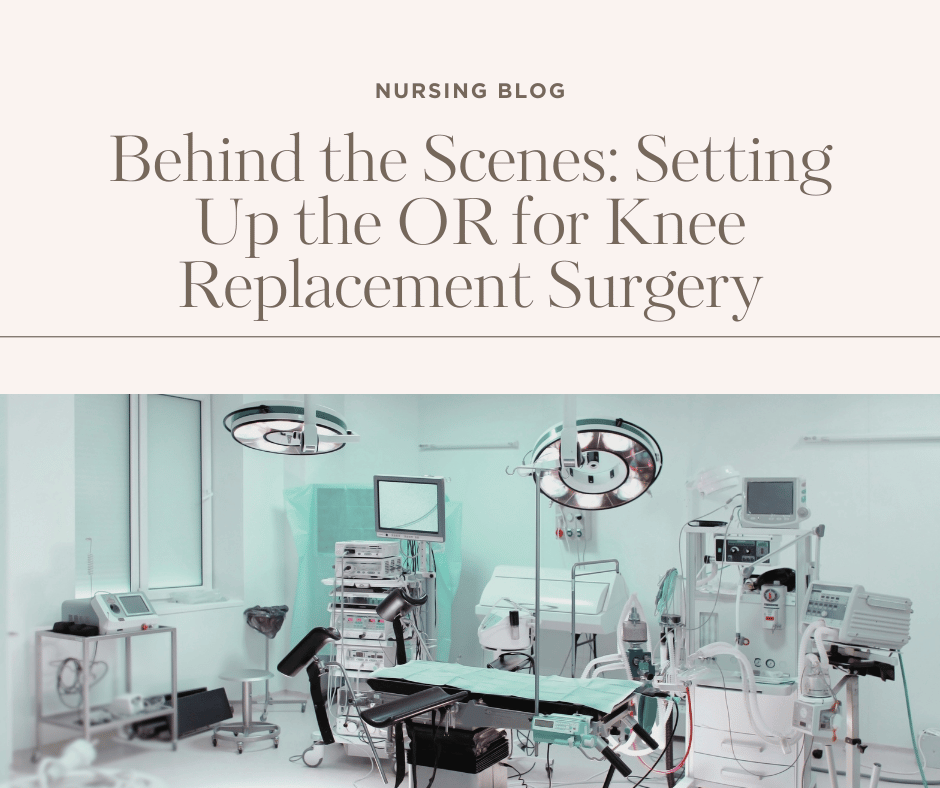Knee replacement surgery Operating Room Setup, encompasses more than just surgical skill and patient readiness. The efficiency and effectiveness of the operating room setup are pivotal in ensuring a successful procedure.
From organising surgical instruments to maintaining a sterile environment, every detail count to be able to perform a successful surgery.
In this blog post, 5 Vital Steps for Enhancing a Perfect Knee Replacement Surgery Operating Room Setup, we’ll delve into how to enhance your operating room setup using this five vital steps specifically for knee replacement surgeries.
By optimizing these aspects, you can streamline operations, mitigate risks, and achieve optimal outcomes for your patients.
Initial Assessment:
Upon entering the operating theatre, assess the patient’s surgical plan to determine the specific knee(s) involved. This initial assessment helps in organizing the required equipment and positioning the patient correctly for the procedure.
Additionally, it ensures that the surgical team is fully prepared and aware of any unique considerations for the surgery.
Considerations such as previous surgeries, medical conditions, and any potential complications should be carefully evaluated during this phase.
Setting Up the Operating Bed Knee Replacement Surgery:
Begin by ensuring that the operating bed has been properly charged overnight. Once confirmed, move the bed to the center of the room, aligning it perfectly with the operating light.
Lock the bed in place to prevent movement during the procedure. To enhance patient comfort and prevent pressure sores, place a gel mattress on top of the bed and secure a pat slide for smooth patient transfer.
Arranging Machines:
Position the machines on the side opposite to the operation site. For instance, if operating on the right knee, place the machines on the left side, although this may vary based on surgeon preference.
Start with setting up the diathermy machine, ensuring it’s plugged in and calibrated according to the surgeon’s preferences. Attach a diathermy pad for monopolar diathermy use.
Next, arrange the suction machine, opting for models like the Neptune suction machine that can handle varying fluid volumes effectively. Additionally, set up the cement vacuum pump to mitigate odors during cement mixing.
Table Attachments:
Prepare table attachments like bolsters and hip supports for easy attachment to the operating table. These attachments play a crucial role in supporting the patient’s body and ensuring proper positioning throughout the surgery.
By having these attachments readily available, the surgical team can quickly adjust the operating table to accommodate the patient’s needs and optimize surgical access.
Additionally, ensure that the table is equipped with safety features such as locking mechanisms to prevent unintended movements during the surgery.
Final Checks:
Thoroughly check all equipment, sterilized surgical instruments, and their arrangement on the instrument table before the surgery. Perform a final inspection of the operating room to ensure that everything is in place and functioning correctly.
Additionally, review the surgical plan and patient records to verify accuracy and completeness. These final checks help in identifying any potential issues or discrepancies before the surgery begins, allowing for timely resolution and ensuring a smooth and successful procedure.
Communication with the surgical team is essential during this phase to ensure everyone is aligned and prepared for the surgery.
Thorough preparation of the operating room is crucial for the success of knee replacement surgery.
By meticulously following these steps and ensuring all equipment is properly set up, you create an environment conducive to smooth and successful procedures, ultimately benefiting patient outcomes.
Are you a healthcare professional involved in knee replacement surgeries? Share your tips and experiences in preparing the operating room in the comments below!
Don’t forget to subscribe for more surgical guides and healthcare insights.

